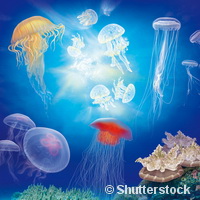Creating life-saving drugs from deadly venom
When faced with a scorpion, poisonous snake, jellyfish or tarantula, most people would beat a hasty retreat. For a team of scientists investigating the therapeutic potential of their venom, these are however very treasured creatures. The VENOMICS ('High-throughput peptidomics and transcriptomics of animal venoms for discovery of novel therapeutic peptides and innovative drug development') project is extracting their venom, examining its ingredients and testing how each individual molecule could be used by doctors. There are more than 100,000 species of venomous animals, and each venom type is a complex cocktail of up to 1,000 toxic molecules - most of them mini-proteins called peptides. So far, 2,000 venom proteins have been identified, while the VENOMICS project will study 10,000 new ones. Venoms frequently contain neurotoxins, which target the nervous system of prey. Cardiotoxins affect heart function, while hemotoxins target blood cells and circulation. But while they can be fatal, take these toxins individually and at a more modest dose and they could help treat heart disease, pain, cancer, diabetes and other conditions, according to the VENOMICS team, and potentially save lives. What makes this project particularly innovative is its ability to deal with large numbers of mini-proteins. The traditional approach has been to test venom extracts to see if they are able to impact upon a biological process. Those venoms identified as 'interesting' at this stage are then broken down into its components. Each component is then tested again for impact before being broken down further. Eventually, the single molecule responsible for bioactivity is identified and purified, and its structure determined. While effective, this workflow is slow and cannot b used for a large-scale investigation of venoms. The VENOMICS researchers are starting by using DNA sequencing to build up a bank of 10,000 mini-proteins that can then be reproduced using bacteria. The molecules will then be purified and their activity studied in vitro. It will then be possible to see in which conditions a molecule becomes active. So the team will be working on a multitude of mini-proteins at the same time, rather than one at a time, which speeds up the process. While this is the first time this field has been studied in depth, we already know that it is possible to turn a venom toxin into a drug. Captopril, a molecule derived from the venom of a Brazilian pit viper, is used to treat hypertension and generates annual sales of at least USD 1 billion. Two other drugs created from snake venom are used to treat heart attacks, while the venom of a cone snail can be used to relieve persistent pain. One of the most recent venom-derived drugs to reach the market - manufactured using the saliva of the Gila monster lizard - is now being used to treat type II diabetes. If successful, the project may lead to a host of new drug candidates, enable the VENOMICS team to carry out in-house drug development and generate licensing opportunities for pharmaceutical companies. The project is being led by France-based VenomeTech, a small company specialised in venom-based drug discovery. It is joined by other small and medium-sized enterprises (SMEs) and universities from France, Belgium, Denmark, Spain and Portugal. The project partners have received just under EUR 6 million in funding under the Health strand of the EU's Seventh Framework Programme (FP7).For more information, please visit: VENOMICS : http://www.venomics.eu/(opens in new window) Project factsheet
Countries
Belgium, Germany, Spain, France, Portugal



